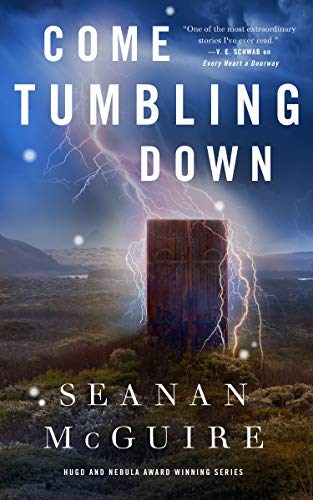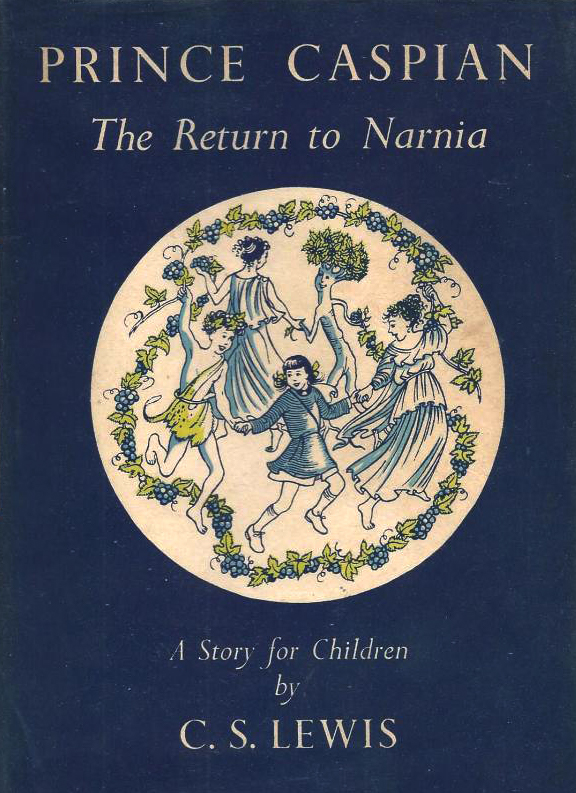Jack Lewis’s publisher didn’t expect The Lion, the Witch and the Wardrobe to be a smash success. In fact, he was concerned that it would do poorly and damage Jack’s reputation. But one thing he knew for sure was that, if it was going to be a children’s book, it would need to be a series. So before The Lion, the Witch and the Wardrobe even came out, Jack turned his attention to writing a second book.
This story was completely disconnected from most of the characters of the first book. It was, in fact, a prequel, telling the story of how the lamppost in the Narnian woods came to be there. But Jack got stuck partway through the writing, and his publisher agreed with him that it wasn’t coming together in the best way, yet. So he turned his attention to another idea—this one about a magician who pulls a group of children into Narnia to help him fight a war. The book was called Drawn Into Narnia, and Lewis finished it quickly, writing the last words in 1949, before The Lion, The Witch and the Wardrobe hit bookshelves.
This is, of course, the book which became known as Prince Caspian, a title the publisher came up with and that Lewis did not like. Lewis was allowed to add The Return to Narnia as a subtitle.
The story takes place a year after the first novel for the Pevensie children (who are on a train station platform, headed off to school in 1941) and 1,300 years after the events of the first book for the people and creatures of Narnia. According to Lewis’s own timeline, Prince Caspian takes place in the 2303rd year after the creation of Narnia (the events of The Lion, The Witch and the Wardrobe take place from Narnian years 1000 to 1015).
Buy the Book


Come Tumbling Down
The Pevensie children find themselves back in Narnia, though they don’t realize where they are for some time. (They’re wandering the ruins of their own castle, much to their shock when they discover what is happening). A chance encounter with a dwarf brings them up to speed, and the entire middle section of the book is that dwarf telling them Prince Caspian’s story. We are introduced for the first time to humans in Narnia other than our four heroes, as the Telmarine people have invaded and ruled Narnia for several hundred years, and are given an answer as to how there are other humans in this world at all. (Narnia, which was implied in the previous book but made abundantly clear here, is a country, not a world.)
In one of his letters, Lewis said that Prince Caspian is about the “restoration of the true religion after corruption.” It has been suggested by a number of scholars that Lewis patterned his history of Narnia and the Telmarines on the Norman conquest of England, and Dr. Michael Ward has argued persuasively that Prince Caspian is the book where Lewis explores the planetary influence of Mars (creating some sense out of the strange juxtaposition of war and agricultural revels… Mars was god of war as well as a guardian of agriculture). Which means that, in some sense, Lewis is exploring not just war in this novel, but religious war. What are the forces that work to suppress truth and create new narratives as oppressors settle into new territories? What would it take for the oppressed to rise from hiding and return to their rightful place? What would it look like for these two peoples to find a place of harmony and peace again under the right sort of leader?
And of course, all of this is unfolding as Lewis also explores a variety of spiritual questions, many of which are about doing the right thing when no one else agrees with you, even if it means going it alone (as Caspian must and as Lucy fears she will have to). In two weeks we’ll start to dive into some of these topics and themes, so if you’re reading along, here are a few things that you may want to pay attention to:
- Notice the dueling narratives throughout (the Pevensies and Caspian as well as the battle and the bacchanalia), as well as how they come together.
- Pay attention to the insistence on the Adamic “royal line” and the ways in which Caspian is equated with the Biblical Adam throughout the text.
- Take note of who is more likely to be seduced by evil and what their characteristics are. Also, we get our first indication that resurrection is not something that’s all that unique (a theme Lewis will return to later in the series).
- Likewise, take careful stock on how the eldest two children (Susan in particular, yet again) are described, and what Lewis might be telling us about becoming “too old for Narnia.”
- There is some explicit discussion of “race” along magical lines in this book. I don’t think we’ll do a whole post about it yet, because there are stronger places from which to explore this topic later in the series, but keep an eye out for comments about different types of dwarfs and attitudes toward a certain “half-and-halfer.”
- Be sure to notice that Reepicheep is the Best Mouse (because I won’t allow any disagreement here).
- And of course, keep an eye on Aslan and the strange ways he interacts with the children in this book… What is Lewis telling us about his conception of God/Jesus in the way he portrays Aslan? What is he trying to tell us (the readers) as well as the characters in the book?
If the discussion on The Lion, The Witch and the Wardrobe is any indication, I suspect our conversations will be enlightening, challenging, and enjoyable. I’m looking forward to the interaction. See you in two weeks—or a thousand years, whichever the case may be!
 Matt Mikalatos is the author of the YA fantasy The Crescent Stone. You can follow him on Twitter or connect on Facebook.
Matt Mikalatos is the author of the YA fantasy The Crescent Stone. You can follow him on Twitter or connect on Facebook.










